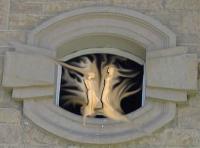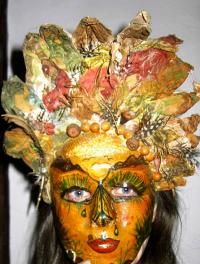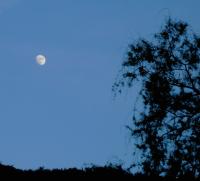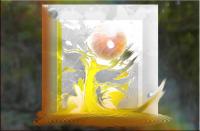The Universe is Woven in Unmanifest Ether
http://metaphysicalmusing.com/articles/2010/2010unmaifestuniverse.htm
My intention in this article is to show how metaphysical principles are universal. I have only touched the surface here. Of course, correspondences to the Sanskrit teachings are to be found not just in the Maori traditions, but also around the world in Taoism, the Kabala, Celtic and Druid lore, and in countless other sources where the remnants of higher Truth are found.
The Maori people of New Zealand have a rich metaphysical tradition. There are many correspondences in the Maori concepts and the Sanskrit. A prime example is the idea of a woven universe.
“In ether (akasha) are woven and interwoven all those worlds – the worlds that are above, below, and in between heaven and earth; all these worlds that were, that are, and that shall be.” (Brihadaranyaka Upanishad III.viii.4; Madhvacarya)
“The universe itself is a process or event within the cosmic process by which Io orders creation. Io is the grand weaver, sewing the universe together into a magnificent fabric.” (The Woven Universe, Marsden)
The Sanskrit words are otam for woven and protam for interwoven. Some translators use the word ‘pervade’ instead of woven, but the understanding is the same: “…the unmanifested [ether] pervades the manifested creation, like thread woven warp and woof in a cloth.” (Sivananda)
However, other Indian scholars are careful to point out that this ether is far more subtle that that which it pervades and cannot be called physical ether – it is therefore ‘unmanifested’ ether. (Krishnananda)
In the Bhagavad Gita (VII.7), Krishna speaks as the voice of the eternal One-ness: “On Me all this universe is strung, on a thread like clusters of jewels (or pearls).” What could be more jewel-like than the clusters of stars and galaxies in the night sky?
The Sanskrit word used in this verse (VII.7) is protam again, meaning ‘is strung’ or interwoven. This is the same word in the Brihadarayanka (III.viii.4): “In ether (akasha) are woven and interwoven all those worlds.”
Maori: “This is not some kind of ‘mechanistic’ weaving or construction, however. Io is not an external ‘god’ who ‘constructs’ the world as in the Old Testament concept. Rather the immanent Io presence in the world takes the form of reo, a ‘voice’ … everywhere.”
In the Sanskrit texts, the Power of Sound produces the entire universe. This Power of Sound is said to be unknown and un-understood. We who are limited to the five senses are not aware of the subtle voice that ‘sings’ the universe, emanating the ‘word’ vAc in Sanskrit. (Shiva Sutras)
“Now, all this universe was then undifferentiated. It became differentiated by name and form.” (Brihadaranyaka Upanishad I.iv.7; Nikhilananda)
The gods
In any world culture the ‘gods’ personify metaphysical principles. Perhaps the great sages of ancient times understood that thinking in the abstract does not come easily to all. Therefore they encoded metaphysical knowledge into numerous deities so that these truths could be passed down through the ages.
Io & Brahman
The Maori deity Io is portrayed in terms that feel very similar to the Sanskrit deity and metaphysical principle Immensity, Brahman. Brahman is the Space-Time Principle.
“The possibility of a form, of a perceptible reality, depends on the existence of a ‘place’ where it can appear and expand, that is on the existence of…space-time which is the result of equilibrium between two opposites, between the centripetal (Vishnu) and the centrifugal (Shiva) principles. It is a balance between concentration and dispersion, between a tendency toward existence and a tendency toward annihilation, between light and darkness.
“The source of the world is therefore … neither concentration nor dispersion, but the result of their opposition, their equilibrium … The Immense-Being (Brahma), masculine or personified form of the Immensity (Brahman), represents the possibility of existence resulting from the union of opposites. Hence … the source, the seed of all that is … as a revolving, space-creating, and time-creating power.” (Danielou)
In the Maori tradition, Io brings into being the deity Awatea - the god of ‘space and light’ (watea and awatea) - and the first heaven was created by him on the foundations established by Io. (Marsden)
“This was indeed Brahman in the beginning. It knew itself only as ‘I am Brahman.’ Therefore it became all.” (Nikhilananda I.iv.10)
Maori: “In the beginning, Io existed alone in the realm of Te Korekore, in his passive state as … Io of the slumbering countenance, Io of the calm and tranquil countenance, Io of the unchanging and unadulterated in whom there is no confusion and inconsistency.” (Marsden)
Nothingness
“In the Beginning, there was nothing whatsoever in the universe.” (Nikhilananda I.ii.2)
Maori: Nothing existed before Io, for he alone was pre-existent as Io-matua-kore the parentless, the first parent, the precursor, the first cause, and the foundation of all things. (Marsden)
Flashing throb-like gleam
Io was both of the ‘passive countenance’ and of the ‘flashing active countenance.’ In the Sanskrit texts, the principles of manifestation of the universe are male Purusha, and female Prakriti. The female Prakriti is often described as that which shines, that which is brilliant (kAsh). In Kashmir Saivism the words spanda and sphurattA are defined as creative pulsation and the throb-like gleam that brings about the world process.
These two principles, Purusha and Prakriti are in fact the One. They have merely taken on the ‘appearance’ of two for the purpose of manifestation.
Maori: “…Io brought into being the first gods, Rangi-awatea and Papa-tua-nuka, the male and female principles out of which all things derived.”
***
The Woven Universe, Selected Writings of Rev. Maori Marsden, published by The Estate of Rev. Maori Marsden, 2003.
The Brihadaranyaka Upanishad, Swami Krishnananda; The Divine Life Society, Uttaranchal, Himalayas, India, 2006.
The Brihadaranyaka Upanishad, commentary of Sankaracarya, translated by Swami Madhavananda; Advaita Ashrama, Kolkata, India, 2004.
The Brihadaranyaka Upanishad, Commentary of Sri Madhvacarya, Translated by Rai Bahdur Srisachandra Vasu Vidyarnava; Chowkhamba Sanskrit Series Office, Varanasi, India, 2001.
The Brihadaranyaka Upanishad, Swami Sivananda; The Divine Life Society, Uttaranchal, Himalayas, India, 2002.
The Brihadaranyaka Upanishad; in The Upanishads, A New Translation by Swami Nikhilananda, Vol. III; Ramakrishna-Vivekananda Center, New York, 1990.
Siva Sutras, The Yoga of Supreme Identity, translated by Jaideva Singh; Motilal Banarsidass Publishers, Delhi, India, 1991.
The Gods of India, Hindu Polytheism, by Alain Danielou; Inner Traditions International Ltd., 1985.
The Bhagavadgita in the Mahabharata, translated by J.A.B. van Buitenen; The University of Chicago Press, 1981.














 Dies ist eine mit page4 erstellte kostenlose Webseite. Gestalte deine Eigene auf www.page4.com
Dies ist eine mit page4 erstellte kostenlose Webseite. Gestalte deine Eigene auf www.page4.com